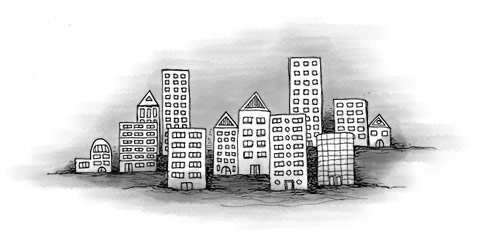With a population density of over 330 people per square kilometre, Japan´s demand for accommodation is always high. 25% of the population is concentrated in the Tokyo metropolitan area alone.
With space at a premium, the Japanese build in the vertical. Japanese cities are filled with modern high-rise apartment buildings called manshon (mansions). While many Japanese are now choosing to live in less-crowded (and less expensive) suburbs, living further from the city also means longer commutes to work.
Japanese apartments
Space economy dictates most features of Japanese apartments. Houses and apartments are designed as multi-purpose spaces. A bedroom becomes a living room with the removal of a futon, a living room is turned into a dining room with the simple addition of a small table, and so forth.
The traditional flooring of a Japanese home is the tatami mat, a two-by-one meter mat made out of straw and silk. While tatami mats are often replaced by modern flooring materials in newer houses and apartments, the tatami remains the unit in which property sizes are measured. Some apartments´ floor space can be as little as 10 tatami, or 15 square metres (1 tatami = 1.53 sq. metres or 16.46 sq. feet).
Many Japanese properties are rented unfurnished, and even the furnished apartments are unlikely to offer many of the amenities that foreigners take for granted. Framed beds, full-size ovens and drying machines are usually nowhere to be found. Stoves are often limited to hot-plate style gas burners. Central air and heating are rare, though a kerosene heater is often provided for use in cold winter months.
Property size and some features improve with higher prices, but foreigners should not expect all of their accustomed home appliances and floor space from any Japanese apartment.
Western-style luxury apartments are available in some neighbourhoods, but their cost puts them outside the reach of all but the wealthiest residents.

